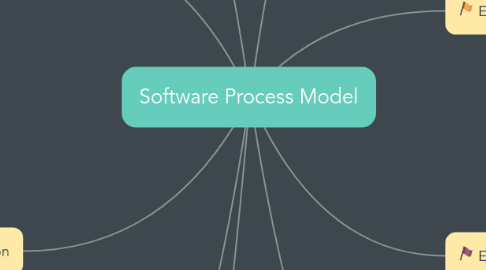Software Process Model
by Kiki Lala

1. Integration And Configuration
1.1. Process : 1. Component analysis; 2. Requirements modification; 3. System design with reuse; 4. Development and integration.
1.2. Adv : 1. Faster 2. better understanding of their problem
1.3. Disadv : 1. May be plan-driven or agile 2. Not have cost-effective
2. Iterative Agile
2.1. Concept : 1. Plan 2. Design 3. Check 4. Adjust
2.2. Adv : 1. flexible alternative than rigid method of Waterfall. 2. Customer involvement 3. process is a continuous 4. allows risk identification and mitigation early on in the development 5.work is divided into small cycles
2.3. Disadv : 1. Costly. 2. Not suitable for smaller projects.
3. Iterative speral
3.1. Concept: 1. Planning 2. Risk Analysis 3. Engineering 4. Evaluation
3.2. Adv : 1. Reduces high amount of risk. 2. Good for large and critical projects. 3. Strong approval and documentation control. 4. The software is produced early in the life cycle process.
3.3. Disadv : 1. It can be costly to develop a software model. 2. It is not used for small projects.
4. Reuse Oriented Software Programming
4.1. Diagram of reuse-oriented software: 1. Component Analysis 2. Requirement Modification 3. System design with reuse 4. Development and Integration
4.2. Adv : 1. Reduce the overall cost. 2. Save the time 3. Faster delivery of software.
4.3. Disadv : 1. Not always practical in its pure form. 2. Compromises in Requirement may lead to a system that does not meet the real requirement of the user. 3. Organization using the reusable component, are not able to control the new version of component, this may lead to lost control over the system evolution.
5. Incremental Development
5.1. Adv : 1. Customers get usable functionality earlier than with waterfall 2. The quality of the final product is better (The core functionality is developed early and tested multiple times)
5.2. Disadv : 1. Total cost is higher than waterfall. 2. Needs good planning and design
6. The Waterfall Model
6.1. The Six Stages of Falling Water: 1. Requirements 2. Analysis 3. Design 4. Coding 5. Testing 6. Operations
6.2. Adv : 1. Adapts to Shifting Teams 2. Forces Structured Organization 3. Allows for Early Design Changes.
6.3. Disadv : 1. Nonadaptive Design Constraints 2. Ignores Mid-Process User/Client Feedback 3. Delayed Testing Period:
7. Evolutionary Prototype
7.1. Concept : 1. Plan 2. Develop Prototype 3. Evaluate Prototype 4. Repeat from Step 1
7.2. Adv : 1. Reduced time and costs, but this can be disadvantage if the team loses time in developing the prototypes. 2. Improved and increased client involvement. 3. Real-time development via experimentation.
7.3. Disadv : 1. Insufficient analysis· Client confusion of prototype and finished system. 2. Team misunderstanding of client objectives. 3. Excessive development time of the prototype. 4. Expense of implementing prototyping
8. Evolutionary Exploratory
8.1. Adv : 1. For small or medium-size interactive systems 2. For parts of large systems
8.2. Disadv : 1. Lack of process visibility 2. Systems are often poorly structured
9. CBSE
9.1. Concept : 1. Outline requirements 2. Search components 3. Re-search components
9.2. Adv : 1. Reduce amount of software to be develop 2. Reduce cost and risk 3. Faster delivery
9.3. Disadv : 1. Requirement – system does not needs of user 2. Control over system evolution is lost


